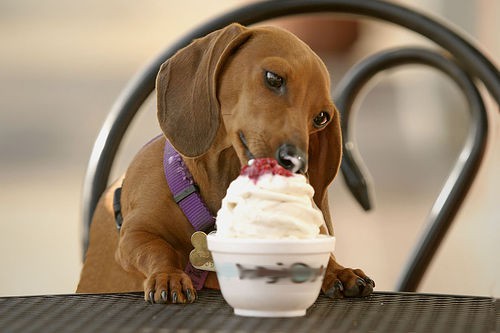 With the hot weather we’ll all be enjoying outside activities, and there are special safety concerns when it comes to your four-footed friends. Pet expert Warren Eckstein has some advice on how to keep your pets cool in hot weather.
With the hot weather we’ll all be enjoying outside activities, and there are special safety concerns when it comes to your four-footed friends. Pet expert Warren Eckstein has some advice on how to keep your pets cool in hot weather.
HEATSTROKE
This is the most serious and dangerous thing to worry about with your pet in the summer.
Here are the symptoms:
• Excessive panting
• Vomiting/diarrhea
• Elevated temperature
• Hot, dry skin
• Pale lips and gums
• Collapse and coma
Pets rely on panting and sweating to maintain their normal body temperatures but cats and dogs only have efficient sweat glands on the pads of their feet. So, even if you don’t feel overheated under the conditions you’re in, your pet may not be feeling too good.
Also, pets with pushed-in faces, like pugs, are more susceptible to heatstroke because they can’t cool themselves down with panting as efficiently, so be careful.
Younger and older pets are also more prone to heatstroke because their cooling systems are not running at peak efficiency.
The best way to treat heatstroke, of course, is to prevent it from happening in the first place.
SOME DO’S AND DON’TS
• Never keep your pet in an unattended car.
Even if the temperature is moderate outside and the windows are open, cars can heat up like ovens. Never keep your pet closed up in a pen or kennel without shade, adequate ventilation or water.
• Shade is a must.
If you leave your pet outside while you go to work, remember to make sure there is always a shady place for them to rest. The sun moves through the yard all day, there may be lots of shade when you leave and no where to hide in the afternoon.
• Always have lots of water available for your cat or dog to drink in the hot weather.
• Freeze the water: Again, if you are leaving your pet for the day, Warren suggests freezing water in the bowl so they’ll have cool water to drink throughout the day.
• Don’t shave.
Shaving your dog’s hair too short, rather than cooling them off, actually robs them of their natural sun block — yes, they can be burned.
IF YOUR PET DEVELOPS SYMPTOMS OF HEAT STROKE ANYWAY, HERE’S HOW YOU CAN HELP:
• Take the pet to a cool place
• Apply cool water
• If you can, put the pet in front of a fan to speed up the cooling process
• Gently massage your pet’s legs and body
• If your pet is conscious, let him/her drink small amounts of water and wash its mouth out with cool water
• Get them to a vet
OTHER BACKYARD HAZARDS BESIDES THE SUN
• Barbecues — keep the dogs away from the hot grill — one vigorous wag, the grill goes over, and its bad news for everyone.
• Pools, lakes, ponds — most people assume dogs and cats know how to swim … not true. You need to make sure your pet can swim, so watch them in the beginning. If they have a hard time, you can get them a life preserver.
• Make sure you know what’s in your backyard that could be hazardous.
SOME COMMON PLANTS TO AVOID ARE:
AVOCADO
AZALEA
BIRD OF PARADISE
CYCLAMEN
DAFFODIL
DIEFFENBACHIA
EGGPLANT
FRUIT AND NUT TREES (APPLE, PEACH, ALMOND, CHERRY, APRICOT),
HIBISCUS, HOLLY
HYDRANGEA
LILY OF THE VALLEY
MORNING GLORY
MUSHROOM
NIGHTSHADE
PHILODENDRON
POTATO
RHODODENDRON
RHUBARB
SCHEFFLERA
TOBACCO
TOMATO
Also, make sure you check any pesticides or fertilizers before you use them, and keep your pets out of toxic areas.
DOGS ON THE BEACH
Again, shade is the thing. Always think about providing a shady area. Don’t take them, unless you can do that. And bring plenty of fresh water on the beach both for your dog to drink and to rinse off with.
DOGS IN THE CAR
Letting your dog stick her head out the window and let her ears flap in the breeze is not a good idea. Debris from the road can fly up and get them in the eyes, nose or mouth. And there’s always the risk that they’ll jump or fall out.
EXERCISING YOUR PET
The first rule of thumb, of course, is common sense. Try to exercise with your pet either early in the morning or after the sun goes down.
They get overheated way before you do, so check on them often. They often keep going to keep up with you, so be careful — it’s hard to tell when they’re tired. Always have water available for you and your pet in hot weather.
Don’t let your dog stand on hot pavement; also, keep in mind, your pet is much closer to the hot ground than you are, thus his body can heat up more quickly and his paws can burn.
You can soak them with water before you exercise to keep them cool — this is especially important for long-haired or heavy coated dogs. Spritzing with water is a good idea but don’t let it give you a false sense of security.
